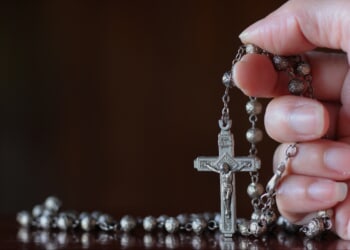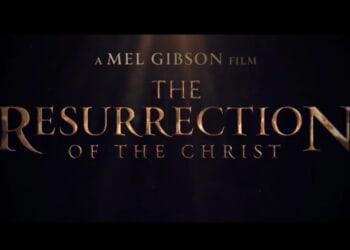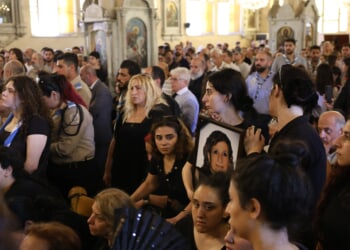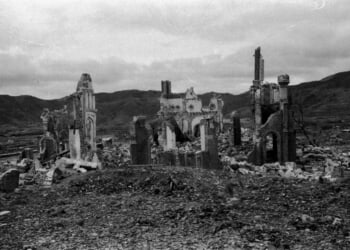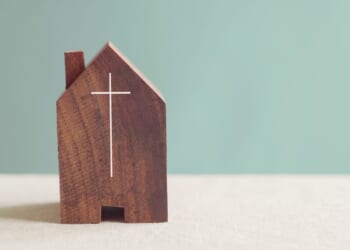The Catholic Church in the U.S. is hemorrhaging Catholics at an increasingly alarming rate, according to a new study. The University of Notre Dame’s Church Life Journal recently published an article entitled “Religious Transmission: A Solution to the Church’s Biggest Problem,” which determined that nearly 90 percent of “cradle Catholics” have left the Catholic Church. Most of those ex-Catholics become religiously unaffiliated.
When Catholicism has been under threat throughout the ages, it has often been the fervor of her most faithful … that has sustained the Church.
Between 1974 and 1990, the share of Americans raised in a Catholic household who continued to identify as Catholic as adults fluctuated between 80 percent and 85 percent. In 2006, that share fell below 75 percent for the first time and never recovered, plummeting to a mere 60 percent by 2021. “Those figures concern whether a person raised Catholic continues to check the ‘Catholic’ box on a survey. That is a pretty low bar as a measure of Catholic commitment,” the report observes. “Perhaps a more salient question is how many of those raised Catholic still participate in Mass every Sunday.”
Unfortunately, those numbers are even more dismal. In 1974, only about one third (34 percent) of those raised Catholic reported attending weekly Mass, as required by the Catholic Church. That share dropped by nearly 15 percent, down to only 20 percent by 2002 and has continued to decline since then, falling to 10 percent by 2021. In other words, nearly 90 percent of cradle Catholics no longer fulfill the most basic obligation required to practice their faith. Citing a Public Religion Research Institute (PRRI) survey, the report notes, “For every one Catholic convert, about nine or ten Catholics leave. That translates to roughly 15 million Catholics gone from the Church.”
The report itself identifies consensus, certainty, and credibility as the three chief factors in preserving the faith passed on to a child by his parents. Consensus, of course, has to do with how many of one’s family members, friends, friends’ parents, peers, etc. accept and practice the Faith; certainty has to do with how certain children discern the Catholics in their life are about their Faith; and credibility has to do with whether the Catholics in a child’s life live their Faith faithfully, thus giving the claim that the Catholic Faith is true some credibility.
There is a sort of myth or stereotype that young Catholics are driven away from the Catholic Church by the fanaticism of their parents: being forced to attend early-morning Mass, being constricted by a too-tightly-tied tie during First Communion, being press-ganged into a nightly family rosary, being shanghaied away to retreats and youth conferences — the sheer inhumanity!
The truth is that devout practice of the Catholic Faith is one of the greatest, most convincing, and most lasting forms of testament to the truth of the Faith. The lives of the Saints demonstrate this, both through the hearts and souls they touched during their lifetimes and through the centuries-long impact that the Saints have even today. The willingness of the Apostles and many of the martyrs of the Early Church to face brutal persecution, torture, and execution for the sake of their Faith inspired millions across the Middle East and the expanses of the Roman Empire to embrace the Faith. When Catholicism has been under threat throughout the ages, it has often been the fervor of her most faithful — not necessarily the most eloquent, the most relevant, or the most relatable — that has sustained the Church.
It has been a long time since the Catholic Church in the West has faced open persecution, but the spirit of the martyrs cannot be forgotten. In fact, that same spirit, that same devotion must be practiced by Catholics daily, even amidst the comforts and relative safeties of the West; it must be exercised like a muscle or else, when the time comes to use it, Western Catholics will find it atrophied and decayed.
St. Thomas More, perhaps the most powerful and influential man of King Henry VIII’s court, likely never envisioned dying for his Faith; yet he lived his life willing to do just that, so that when the time came, he would cling to the Faith even as the axe fell. Long before the Nazis came to power and invaded Poland, St. Maximilian Kolbe called himself a slave of the Blessed Virgin Mary; it was this willingness to give up himself that equipped him to take the place of a fellow prisoner in Auschwitz and be executed.
It is difficult to go to such extremes today, and most Catholics in the West are surely not called to do so. For most of us, our duties lie in our homes and neighborhoods, with our families and friends. Yet even here, there is an opportunity to live the Faith devoutly — with the sort of quiet, unsung fanaticism that has carried the Church through the long centuries. It is this devotion which young Catholics have not seen much of over the past several decades, and which future generations of Catholics must be given if they are to keep the Faith.
READ MORE from S.A. McCarthy:
EU Report Ignores Muslim Violence to Label Catholics ‘Religious Extremists’
The Newest Doctor of the Church’s Influence on Catholic Literature


![Man Arrested After Screaming at Senators During Big Beautiful Bill Debate [WATCH]](https://www.right2024.com/wp-content/uploads/2025/06/Man-Arrested-After-Screaming-at-Senators-During-Big-Beautiful-Bill-350x250.jpg)









